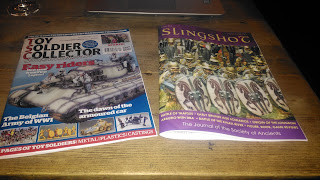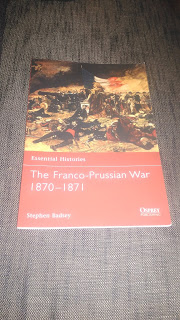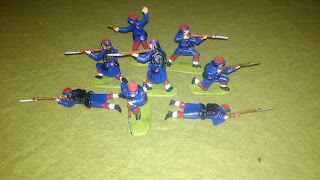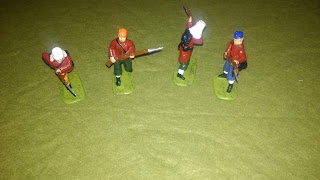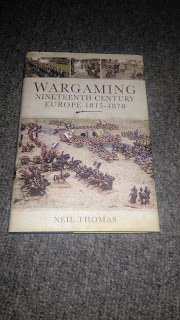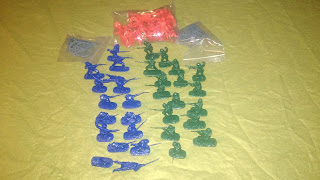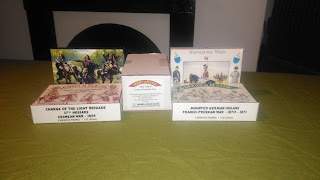NEXT year sees the 150th anniversary of a conflict that radically changed the course of human history.
For centuries it had been assumed that if German-speaking lands were to be united, it would be under the leadership of the Dukes of Austria, ie the Habsburgs, better known for their long run of success in elections to the title of Holy Roman Emperor.
Admittedly the electorate was small and extremely select, never reaching double figures, but even religious schism could not dethrone the Habsburgs.
However a temporary blip in 1740, when Charles VII of Bavaria won the title, was followed by the empire's dissolution in 1806 as a consequence of Napoleon Bonaparte's victory the previous December at the battle of Austerlitz.
The Habsburgs had anticipated this, with the Holy Roman Emperor Francis II giving himself the extra title of Emperor of Austria in 1804.
Austria's dominance in German affairs had faced various challenges over the centuries, but by the 1800s its only serious rival was Prussia.
The two countries fought in the mid-1700s, with Prussia grabbing traditional Habsburg lands in Silesia.
They came to blows again in 1866 when Prussia won an overwhelming victory in the Seven Weeks War.
This allowed Prussia to annexe Hanover, Frankfurt and other German-speaking lands. More importantly, from the viewpoint of Prussian Prime Minister Otto von Bismarck, it led to the creation of what was called the North German Confederation.
(Bismarck's title in German was Ministerpräsident, which literally translates as minister-president - his better known title of chancellor was to come with the formation of the German Empire.)
Despite its limited-sounding name, the confederation covered much of what today would be regarded as Germany. It soon forcibly included Saxony, but missing - for the moment - were the major states of Bavaria, Württemberg, Hesse-Darmstadt and Baden.
Also missing, very much according to Bismarck's plans, was Catholic Austria, which he feared would challenge Protestant Prussia's pre-eminence in a united Germany.
Four years after the Seven Weeks War, Bismarck seized the chance to goad France's Napoleon III into invading German lands.
Austria remained neutral, as did Denmark, which also had a recent grudge against Prussia, while nationalism overcame most south Germans' fear of Prussia to such an extent that Bavaria, Württemberg and Baden joined the Prussian side.
The Franco-Prussian War, known in German-speaking lands as the final event in a series of conflicts called the German Wars of Unification, broke out on July 19, 1870.
It lasted longer than seven weeks but could easily be called the Seven Months War as the Germans marched into Paris on February 17, 1871 (the official victory parade in Paris occurred on March 1).
France was forced to pay an indemnity of five-billion francs - the equivalent, depending on how you calculate it, of almost £350billion in today's money.
That eye-watering sum was chosen to match the formula of an indemnity imposed on Prussia in 1807 by Napoleon Bonaparte, and was later the basis for reparations imposed on Germany after World War One.
But the main result of the Franco-Prussian War was the formation of a unified Germany under the title of German Empire, which included all states where German was the main language, except for Austria, Switzerland, Luxembourg and Liechtenstein.
The new German Empire included the vast majority of Alsace and German-speaking areas of Lorraine (its German name is Lothringen), both former parts of the Holy Roman Empire that had been seized by France in the 17th and 18th centuries respectively.
The King of Prussia became, officially, German Emperor, a title carefully worded over other possibilities that included Emperor of Germany (the preference, apparently, of Prussia's king at the time, Wilhelm I) and Emperor of the Germans.
The latter two titles were regarded as politically insensitive - Emperor of Germany because it implied personal rule over all states within the new German Empire, and Emperor of the Germans because it implied rule over all German speakers.
The German Empire began as a federation of 27 states, but one in which Prussia completely dominated by virtue of population, territorial size and the wording of the empire's constitution.
Incidentally, the German word for emperor, Kaiser (all nouns in German are capitalised), reflects the original Roman pronunciation of the title caesar (the letter c in Latin was pronounced as a k - if the Romans wanted an s sound they, weirdly enough, used an s).
Clearly the Franco-Prussian War was a pivotal moment in European history but also had major ramifications for humans most everywhere, leading, as it surely did, to both World Wars.
Project Kaiser is my name for what I hope will bring together three of my current main interests in wargaming - 54mm toy soldiers, using a grid as a playing surface, and refighting historic battles on or close to significant anniversaries.
As it happens, I already have some figures that are very suitable for Project Kaiser, being reproductions of Victorian metal soldiers.
I bought them somewhere in Kent, I believe, probably Deal or Folkstone, in the 1970s.
 |
| My metal toy soldiers patrolling in front of my collection of wargaming books |
The box they came in does not reveal the manufacturer, but they are described as being "Prussian Band
Jäger Battalion circa 1870".
 |
| Distinctive packaging |
There is no way I am willing to spend the sort of money required to complete Project Kaiser with metal soldiers - luckily there is a good alternative.
to be continued










